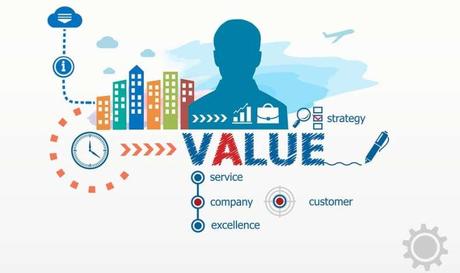In this article, we will be understanding the dynamics that drive a company. In particular, I will introduce two different types of models for investigating these dynamics: the Value Chain ad System Dynamics. The first concept is particularly handy when you are seeking to design continuous small improvements, the second will be helpful when you are trying to see a company from a bird eye viewpoint. Both are equally valuable, but probably for the nature of business process integration the first (value chain) is easier to map and use.
 On Understanding the Dynamics that Drive a Company: Value Chain and System Dynamics
On Understanding the Dynamics that Drive a Company: Value Chain and System DynamicsValue Chain
A value chain is a combination of the systems a company or organization uses to make money. In other words, a value chain is made up of all the various subsystems that are used to create products or services. This includes the company’s processes from start to finish.
Michael Porter developed a strategic management tool for analyzing a company’s value chain. In his book “Competitive Advantage” (published 1985), Porter laid out his method of analyzing value chains. He sought to define a company’s competitive advantage noting that it stems from the company’s processes, such as marketing and supporting activities.
All five primary activities are essential in adding value and creating a competitive advantage. They are:
- Inbound logistics: arranging the inbound movement of materials, parts, and/or finished inventory from suppliers to manufacturing or warehouses, assembly plants, and retail stores
- Operations: managing the process that converts inputs (raw materials, labor, and energy) into outputs (goods and/or services).
- Outbound logistics: the process related to the storage and movement of the final product and the related information flows from the end of the production line to the end user.
- Marketing and sales: selling processes and products for creating, communicating, delivering, and exchanging offerings that have value for customers, clients, partners, and/or society at large.
- Service: all the activities required to keep the product working effectively for the buyer after it is sold and delivered.
Companies can harness a competitive advantage at any one of the five activities in the value chain. For example, by creating outbound logistics that are highly efficient or by reducing a company’s shipping costs, they can either realize more profits or pass the savings to the consumer in the form of lowered prices.
The use of support activities helps make primary activities more effective. Increasing any of the four support activities helps at least one primary activity to work more efficiently.
- Infrastructure: consists of activities such as accounting, legal, finance, control, public relations, quality assurance, and general (strategic) management.
- Technological development: pertains to the equipment, hardware, software, procedures, and technical knowledge brought to bear in how the company transforms inputs into outputs.
- Human resources management: consists of all activities involved in recruiting, hiring, training, developing, compensating, and (if necessary) dismissing or laying off personnel.
- Procurement: the acquisition of goods, services, or works from an outside external source. In this field, the company also makes decisions concerning purchases.
The video below introduces the value chain and discuss the benefits of this model as well as its limitations:
System Dynamics
System dynamics is a methodology and a mathematical modeling technique to frame, understand, and discuss complex issues and problems. Originally developed in the 1950’s to help corporate managers improve their understanding of industrial processes, System Dynamics is currently being used throughout the public and private sector for policy analysis and design.
System dynamics tries to understand the nonlinear behavior of complex systems over time using the following key concepts:
- Stock: an accumulation of people or things in a specific location or with a specific condition in a system. An element of a system that accumulates or drains over time. Stocks are the memory of a system and are only affected by flows.
- Flow: the movement of people or things between stocks within a system boundary or across the model boundary and thereby into or out of the system (through sinks and sources); changes in stocks over time. Flows represent activity, in contrast to stocks that represent the state of the system.
- Feedback: when the effect of a causal impact comes back to influence the original cause of that effect. A feedback loop is an alternating sequence of variables and causal links that creates a closed ring of causal influences.
- Table function: a numeric table version of a graphical function.
- Time delay: a delay in the flow of conserved material or people.
The video below provides an introduction to the concept:
The lecture below gives a set of examples as well as familiarizes you with the concept of System Dynamics:
I hope that these videos will serve as an introduction for understanding the dynamics that drive a company.
